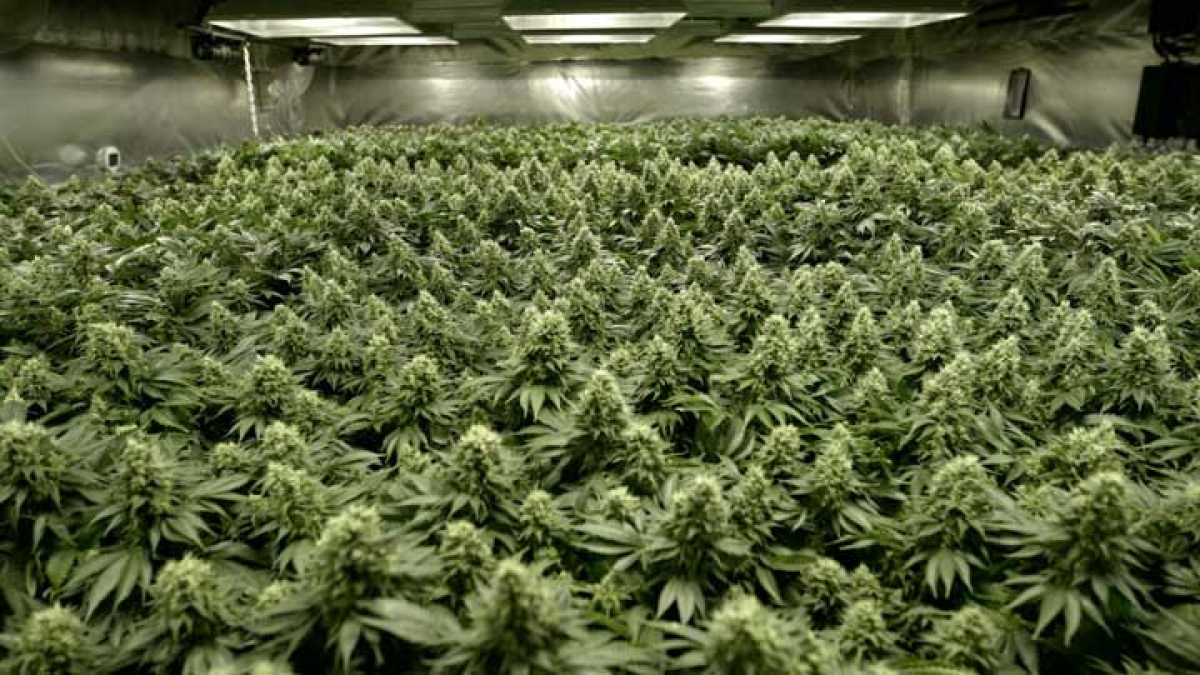
Cannabis and COVID-19: Cultivation During A Pandemic
By Christine Giraud
COVID-19 affected every person and business in the U.S. With skyrocketing unemployment, businesses closing, and no federal assistance, it’s easy to wonder if legal cannabis will go up in smoke.
According to data, the pandemic’s effects on the cannabis industry actually haven’t been all bad. Legal cannabis was deemed “essential” in 10 of the 11 legal adult-use states, and demand for cannabis has been steady.
Keeping up with that demand while adapting to COVID-19 prevention measures to keep onsite workers safe has been a challenge for many cannabis retailers processors and cultivators. This post will describe how growers are changing the workplace to keep their crops and teams healthy by preventing COVID-19 transmission.
Social Distancing
Some of the main measures recommended by the CDC for workplaces include temperature checks, cleaning surfaces, wearing Personal Protective Equipment (PPE), and social distancing. Contamination of any kind can destroy a cannabis or hemp crop, so clean surfaces and wearing gloves and masks (and scrubs and hairnets) are already standard. Temperature checks are new, but easy to implement.
It’s the social distancing—maintaining six feet between people—that’s proven tricky for cultivators. Methods include adding shifts, spacing out workers, and having fewer workers on the clock per shift.
In trimming and maintenance, however, those methods are not always easy.
Trim Rooms
Employees work about a foot apart from each other in the average trim room. Social distancing means cutting down labor from an average of 20 people to 10 or even 5, depending on the size of the trim room. This can put a serious dent in production unless you use an automatic trimmer. Tony Vannice of Operations Management Consulting, works with cannabis organizations on environmental control systems, and said many of his clients are adopting automatic trimmers to trim buds by 50 percent and then do the rest by hand.
New trim rooms can be opened, but those companies would need to take on the costs of adding and outfitting the new space with equipment, including cameras to keep track of product. Then you need air filtration to pull out plant matter from the air. A lot of companies have little room—or budget—to spare.
Cultivation Rooms
Kevin Koszarek, cultivation lead for one of the grow rooms at INSA, said when it comes to actual cultivation, plant maintenance is never a one-person job. “An average room has 400 plants. You have three to six people in there, and there’s only a four foot gap that you could make in between tables to get down the row. You can’t just spread people out across the room either. Everybody’s basically in that row, trying to get it done only two feet apart. And you’re going to be in that room together, all day.”
Koszarek said employees reported not feeling safe at work during lockdown, even though the company took safety measures. “We had a lot of people that just weren’t comfortable because they were all crammed together.” INSA then split the shift into cohorts. “There wouldn’t be as many people in the building at the same time and you worked with a consistent group of people. But when those people left work, who knew what they were doing.”
By mid-April, a majority of the staff was gone, including Koszarek. According to figures from the Commonwealth Dispensary Association, nearly 25% of Massachusetts cannabis industry workers were laid off or furloughed by mid-April.
Key Takeaways
1. Automation will be key. Companies able to automate are well-positioned to prevent viral transmission while maintaining production levels, especially in areas like trimming. According to Brian Anderson, an architect at Anderson Porter Design, a method called “palletized benching,” modeled after Dutch flower growers, may be one solution.
“The concept is that the employee doesn’t go to the plant. The plant comes to the employee,” Anderson explained. “Workers line up at a series of benches that are all on rollers and all computer-automated. When the workers are done either harvesting or transplanting or pruning the plant, it moves on down the line and goes back to its place.” This assembly line approach has nothing to do with COVID-19, but it could improve employees’ ability to social distance. It’s already being done at a couple of grows in Massachusetts.
2. Size matters. Larger companies will better adapt to social distancing measures. One of Vannice’s clients in Massachusetts has 12 cultivation rooms, and enough money to set up an access control system to prevent multiple people from entering the room at the same time. For their harvest process, they are skipping rows. Said Vannice, “I can easily see a smaller operation having more problems than a 100,000 square foot grow that has the flexibility to move around pretty easily.”
3. This is not the last time. Another wave of COVID-19 and future pandemics are inevitable. Future facilities should be designed taking this into account with larger trim rooms, larger extraction rooms, no-touch doors, and so on. Anderson already sees interest in quarantine rooms with his cannabis clients. “We’ve been pushing for six years something called a quarantine room in all of our grows. We found radically varying understandings of what that really meant, and how to define quarantine. Post COVID-19, everybody gets it.”

About the author: Christine Giraud, a freelance writer in Boston, has been writing about cannabis for publications like Foottraffik, The Boston Globe, Civilized, Her(b) Life, Info Today, and ZocDoc.
